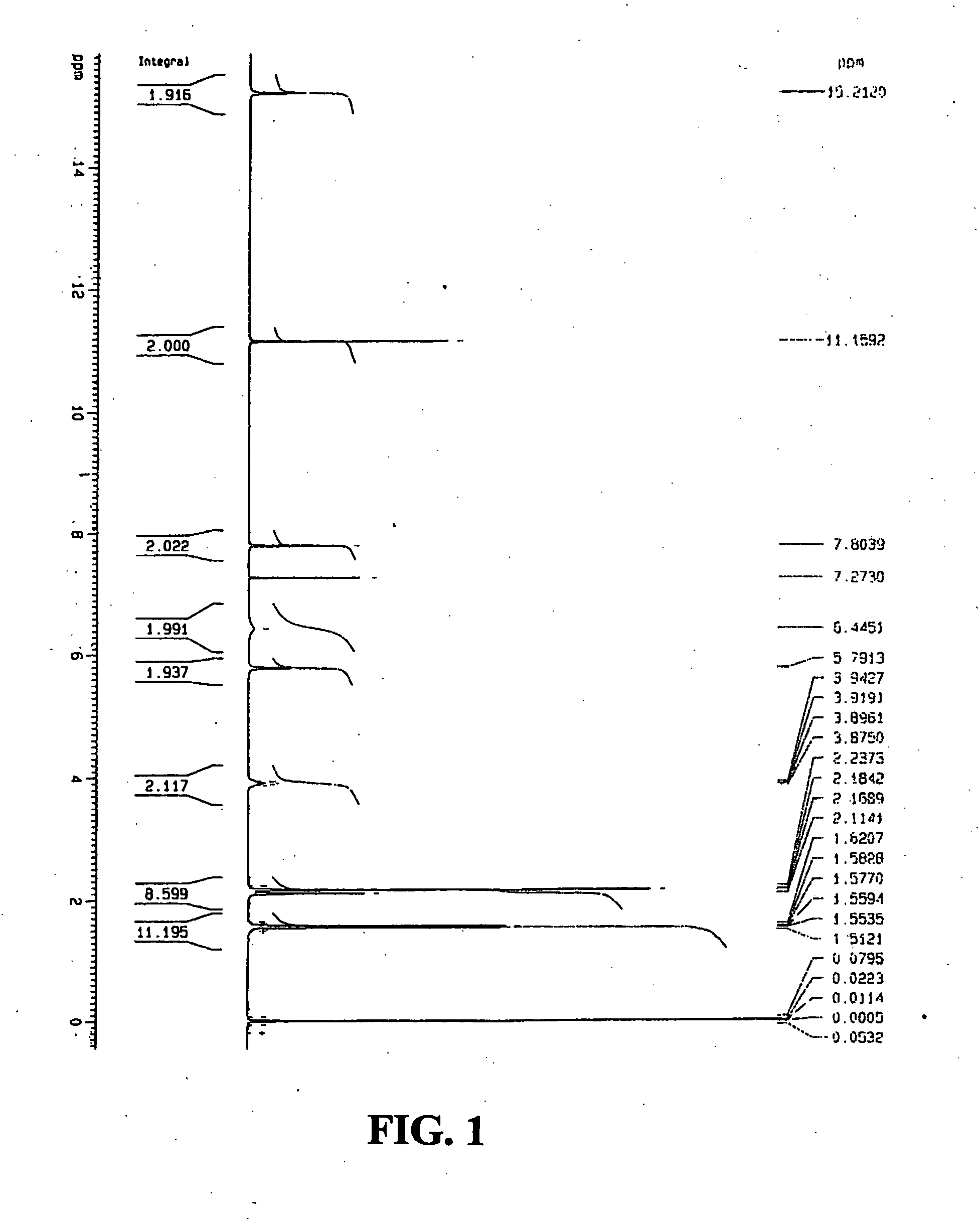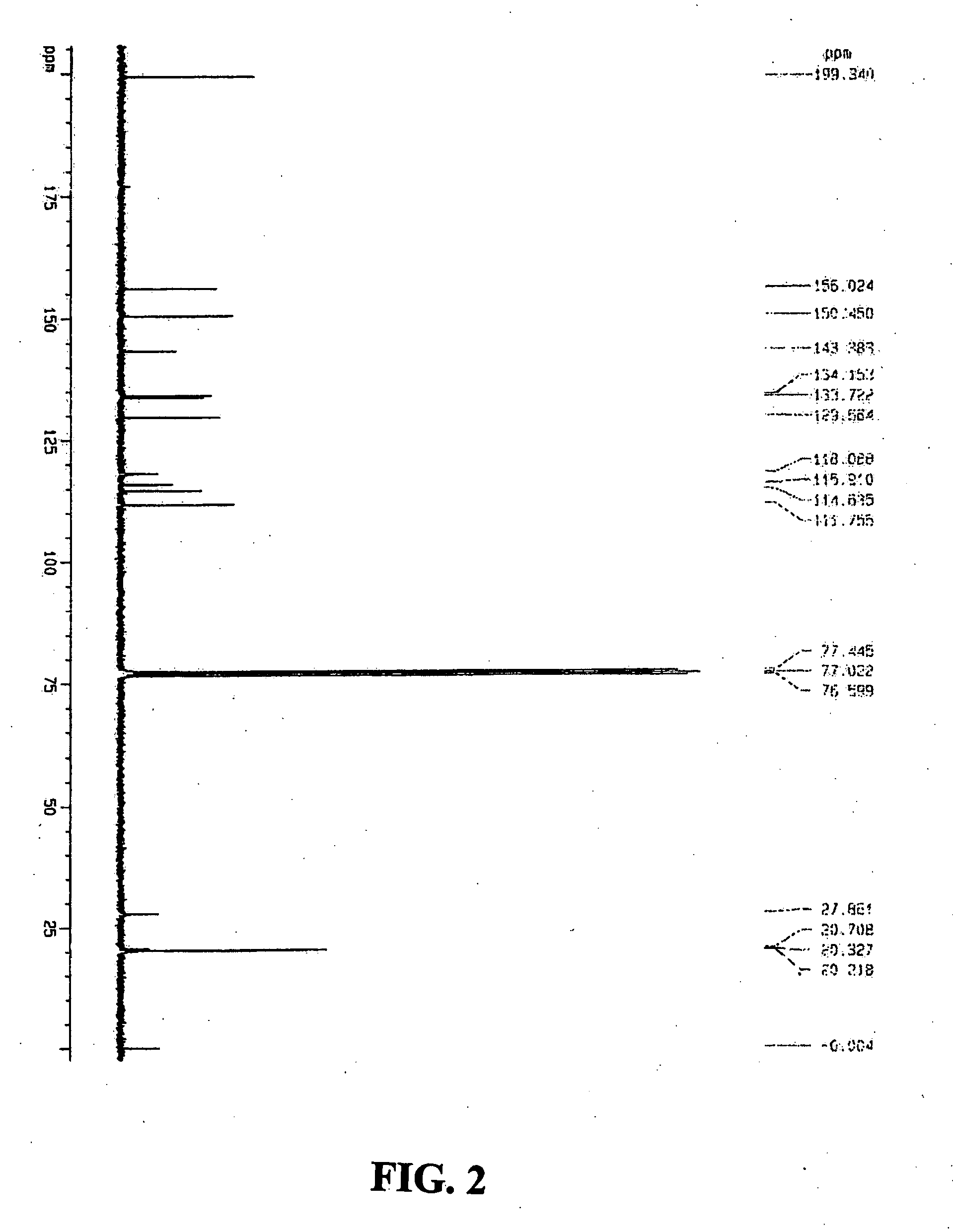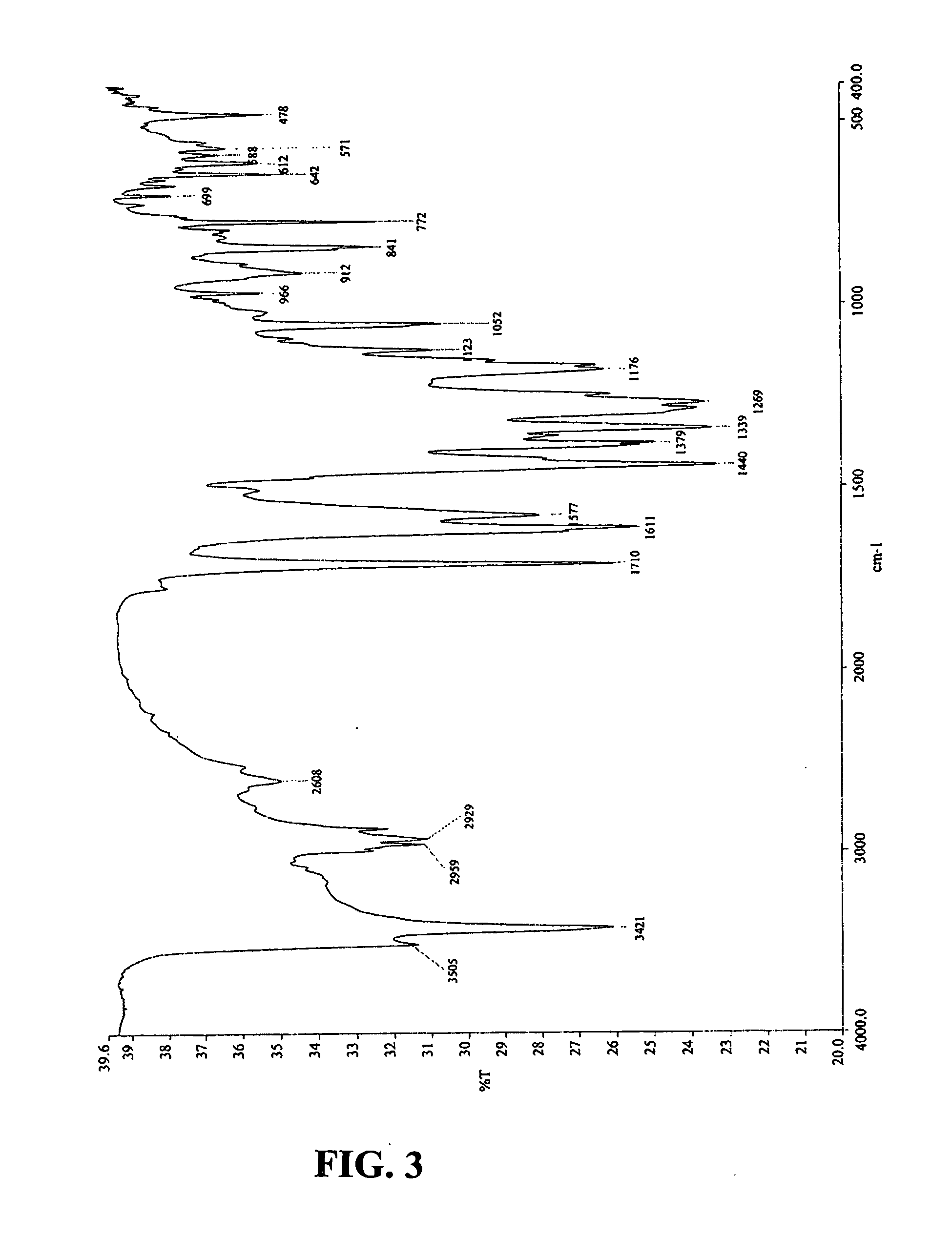Gossypol co-crystals and the use thereof
a co-crystal and co-crystal technology, applied in the field of medical chemistry, to achieve the effect of increasing the sensitivity of cells to inducers and inhibiting the activity of anti-apoptotic bcl-2 family proteins
- Summary
- Abstract
- Description
- Claims
- Application Information
AI Technical Summary
Benefits of technology
Problems solved by technology
Method used
Image
Examples
example 1
Preparation of (−)-Gossypol Acetic Acid Co-crystal
[0085] All chemicals and reagents were purchased from Aldrich Chemical Co. or Lancaster Synthesis Inc. and used without further purification. (−)-Gossypol (1 g) was dissolved in acetone (6 ml) and filtered. Acetic acid was added into the constantly stirred filtrate until the solution turned turbid. The mixture was left at room temperature for 2 hours and then at 4° C. for 2 hours. The co-crystals were collected by filtration using a Buchner funnel under reduced pressure and washed with a small amount of hexane. Pure (−)-gossypol acetic acid was first dried in a lightproof container and further dried in a vacuum drier at 40° C. for 24 hours.
example 2
Characterization of (−)-Gossypol Acetic Acid Co-crystals
[0086] (−)-Gossypol acetic acid co-crystals were yellow or pale yellow and needle shaped. The co-crystals were readily soluble in acetone and ether, slightly soluble in chloroform and ethanol, and sparsely soluble in petroleum. The co-crystals were insoluble in water. The uncorrected melting point of the co-crystals was determined to be 178-180° C. using a Mel-Temp apparatus.
[0087]1H and 13C nuclear magnetic resonance (NMR) spectra of the co-crystals (FIGS. 1 and 2) were recorded on a Bruker 300 instrument. Samples were dissolved in an appropriate deuterated solvent (CDCl3). Proton chemical shifts were reported as parts per million (δ) relative to tetramethylsilane (0.00 ppm), which was used as an internal standard. Chemical shifts for 13C NMR spectra were reported as δ relative to deuterated chloroform (CDCl3, 77.0 ppm). 1H NMR (300 MHz, CDCl3) δ 15.21 (s, 2H), 11.16 (s, 2H), 7.80 (s, 2H), 6.45 (s, 2H), 5.79 (s, 2H), 4.08-3....
PUM
| Property | Measurement | Unit |
|---|---|---|
| enantiomeric excess | aaaaa | aaaaa |
| temperature | aaaaa | aaaaa |
| temperature | aaaaa | aaaaa |
Abstract
Description
Claims
Application Information
 Login to View More
Login to View More - R&D
- Intellectual Property
- Life Sciences
- Materials
- Tech Scout
- Unparalleled Data Quality
- Higher Quality Content
- 60% Fewer Hallucinations
Browse by: Latest US Patents, China's latest patents, Technical Efficacy Thesaurus, Application Domain, Technology Topic, Popular Technical Reports.
© 2025 PatSnap. All rights reserved.Legal|Privacy policy|Modern Slavery Act Transparency Statement|Sitemap|About US| Contact US: help@patsnap.com



